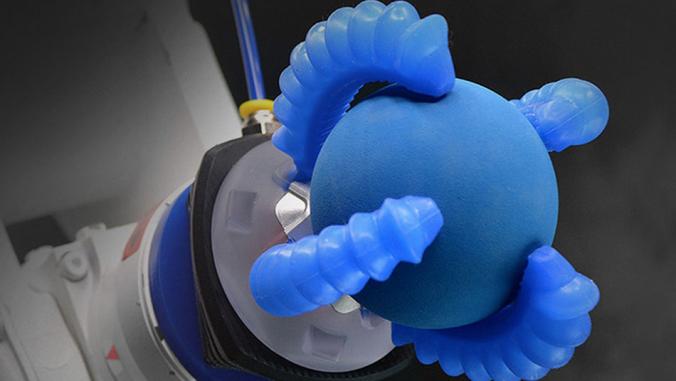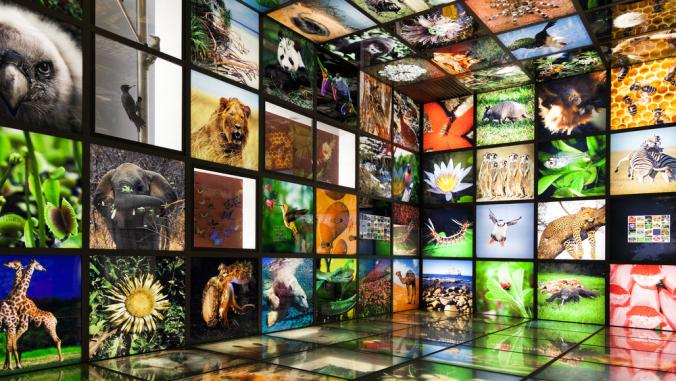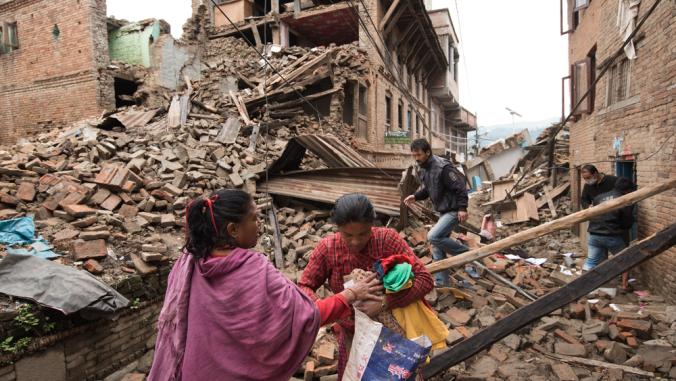Reducing a Brown Cloud to its Silver Lining: How Natural Limits Lead to Innovation
<p>While I do not think that we can design our way out of our current problems of climate change, innovation comes in many forms, including the political and cultural. Let's hope for good news from Copenhagen, while we celebrate the design and business achievements of companies like Envirofit, which has made a highly-efficient stove to replace traditional indoor cookstoves in India. <br /> </p>

Image courtesy Envirofit
Delegates will be meeting in Copenhagen this week as parties to the UN Framework Convention on Climate Change try to reach agreement on reducing the pollution that is cooking the planet. In the thicket of carbon offset formulas and political calculations, a team of officials from the National Institutes of Health and the Lancet, a British medical journal, has a message: The ultimate issue is health.
This team recently published a series of reports on the beneficial health effects of reducing greenhouse gases. The series is a reminder to delegates of the human consequences of public policy decisions and why it is so important to gauge the health impacts of considered strategies. Moreover, although most public discussion is of sacrifice and forbearance, there are some very real, daily benefits to be had on the way to averting global disaster. After all, aren't we talking about improving people's lives, now and in the future, by ending destructive practices?
One report, “Public Health Benefits of Strategies to Reduce Greenhouse-Gas Emissions: Household Energy,” studied the case for efficient cookstoves in India. More than half the world's population, or over 3 billion people, burns fuel indoors to cook and heat their homes. The indoor air pollution from this practice kills 1.5 million people a year, 85 percent of whom are women and children. The fires also contribute to a smoggy plume known as the Atmospheric Brown Cloud that is purported to be trapping heat in the atmosphere.
The Lancet report examined what would happen if 150 million low-emission stoves were put in use over a 10-year period. Their conclusion: “National programmes offering low-emission stove technology for burning local biomass fuels in poor countries could, over time, avert millions of premature deaths, and constitute one of the strongest and most cost-effective climate-health linkages.
“Indoor air pollution from inefficient cookstoves increases the risk of acute respiratory tract infections in children younger than 5 years and chronic respiratory and heart disease in adults older than 30 years. Globally, almost 1 million children are currently dying every year of respiratory infections induced or exacerbated by the inefficient burning of solid fuels. By 2020, the cumulative effect of the proposed Indian stove programme would be to lower the national burden of the three diseases mentioned above by about a sixth. This would be equivalent to elimination of nearly half the country's entire cancer burden."
The authors state that approximately 240,000 children and approximately 1.8 million adults would be saved from premature death by the end of a program that would bring high efficiency stoves to 87 percent of the population by 2020. In addition, approximately 0.5 to 1.0 billion tons of C02 equivalent would be eliminated from the atmosphere.
If these projections are correct, they show clear and dramatic benefits from a low-tech solution to a widespread problem. If all the stoves distributed over 10 years were subsidized at $20 a piece this program would cost $3 billion, roughly equivalent to what the U.S. military had spent directly every 10 days in Iraq as of August 2008, according to the Congressional Research Service. By my calculations, that's $14,705 per saved person and is, perhaps, the best two-for-one public policy deal of the decade. If you could help avert long-term disaster and reduce short-term disability at the same time for that kind of money, wouldn't you do it? It is certainly a question for the leaders now in Copenhagen.
There is one company in Fort Collins, Colo., however, that is not waiting for an answer. Envirofit International has already developed a highly-efficient stove (shown above) and sold, not given away, 100,000 units to people in southern India. The company sells several models of stoves and attachments for between 699 and 2699 Indian rupees. That's about $15-$58. This income is used to develop and expand its businesses, while product development and early commercialization is supported by grants and donations. The company also plans to benefit from trading in the carbon offset market. This business model supports 70 full-time employees around the world and about 500 distributors in India alone.
Envirofit was established as a U.S. tax-exempt corporation in 2004, and has a close working connection with Colorado State University's Engine and Energy Conversion Lab. It is one of the innovative social entrepreneurial organizations serving the “base of the pyramid” customers of the world, those 3 billion who make less than $2 a day.
The company has received numerous awards, including the 2009 Heroes of the Environment from Time Magazine, and a 2009 International Design Excellence Award from Businessweek and the International Industrial Designers Association. What sets the company apart is its disciplined use of mainstream business practices to solve social problems. That means rigorous testing of its product and equally rigorous research into what its customers need and how to get it to them.
What is interesting to me is that this hybrid company seems to be innovative, not in spite of, but because of the constraints it is faced with. In other words, it is a problem-driven operation, and it is no surprise that at its core are engineers. In this market environment, these constraints are severe: The stoves had to be affordable and appealing to low income buyers, durable, dependable and deliverable in primitive conditions, and had to reach a level of combustion efficiency that obviated the need for a chimney.
The impact from this effort has been significant for the economy and the environment. The company claims that one stove typically increases household income by $50-$75 per year and reduces cooking time by 40 percent and fuel use by 60 percent. A new stove also decreases CO2 emissions by 1-1.5 tons per year by emitting up to 80 percent less smoke and harmful gasses. A typical choolhas or cooking stove has to be replaced every 6 months to a year, but the Envirofit stove comes with a 2 year warranty on general parts and a 5 year warranty on its combustion chamber.
I think that it is safe to say that the constraints in this market will become greater and not less. Resource scarcity, increasing population pressure and rising cultural expectations will see to that. Prabhu Kandachar of the Delft University of Technology points out that by 2050, the socioeconomic pyramid will have morphed into a diamond, with a large and demanding middle class. This newly empowered population is headed for a collision course with the natural resource fund and carrying capacity of the planet. The "base of pyramid" (BoP) service community at large therefore recognizes the need for integrating the triple bottom line into all development efforts. Finally, the nature of customer relations seems bound to change. Stuart L. Hart and his colleagues at Cornell outline a “BoP 2.0” phase in “Base of the Pyramid Protocol: Toward Next Generation BoP Strategy” (PDF) in which listening, with the intent to sell, is replaced with dialogue, with the intent to collaborate.
The integration of the green movement and anti-poverty forces seems inevitable as the problems we face push the parties together. We cannot solve our global challenges while millions lie idle. We cannot improve their lives without a wise use of our resources. We cannot marshal our resources wisely without our best technological tools. The integration of approaches seems critical to success in this demanding world. Professor Paul Hudnut, co-founder and director at Envirofit, suggests in a working paper from Colorado State University that our shared goal be “design for extreme sustainability," a philosophy driven by the limits imposed by poverty and the environment.
While I do not think that we can design our way out of our current problems of climate change, innovation comes in many forms, including the political and cultural. Let's hope for good news from Copenhagen, while we celebrate the design and business achievements of companies like Envirofit.
Tom McKeag teaches bio-inspired design at the California College of the Arts and University of California, Berkeley. He is the founder and president of BioDreamMachine, a nonprofit educational institute that brings bio-inspired design and science education to K12 schools.
Image courtesy Envirofit





